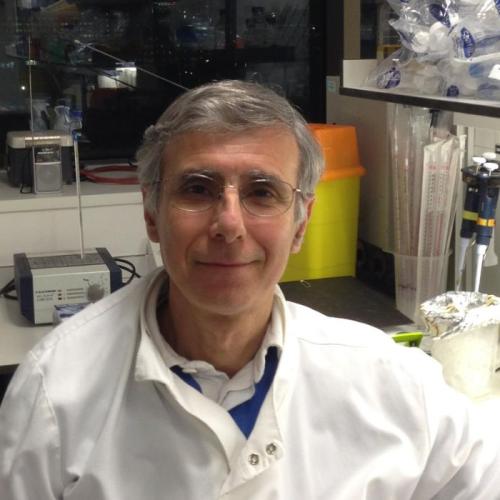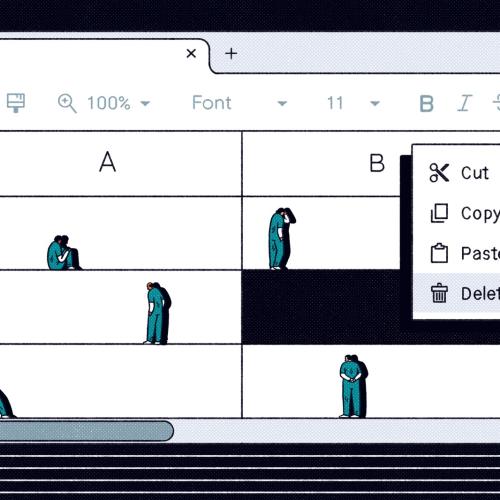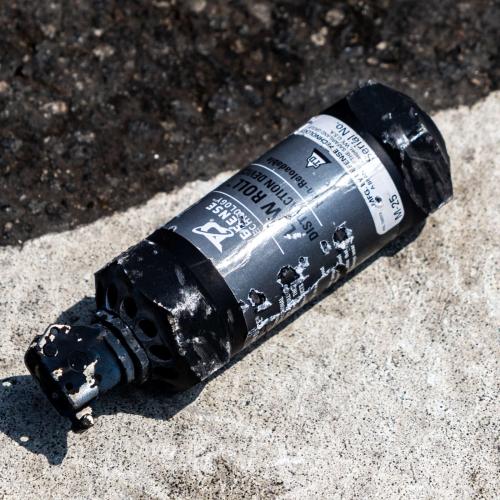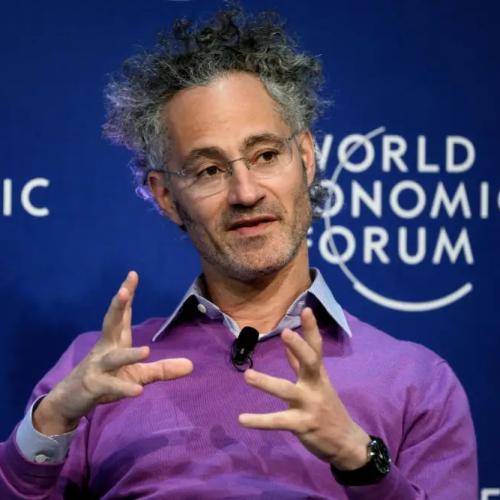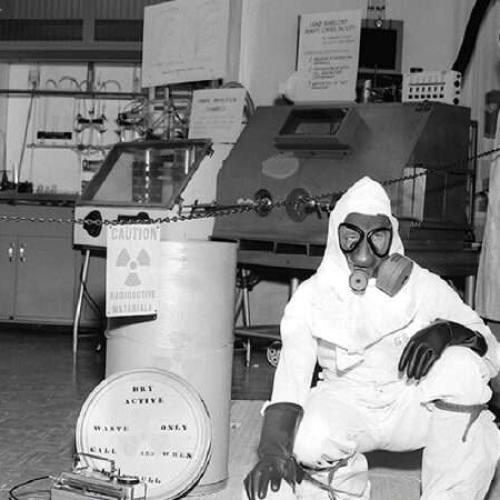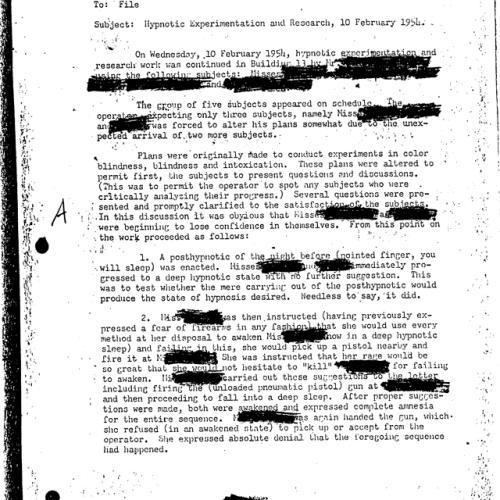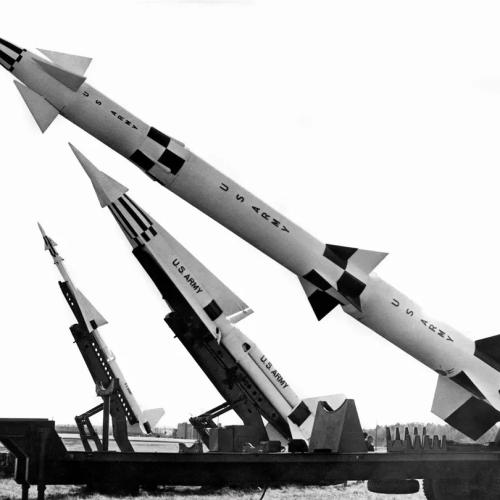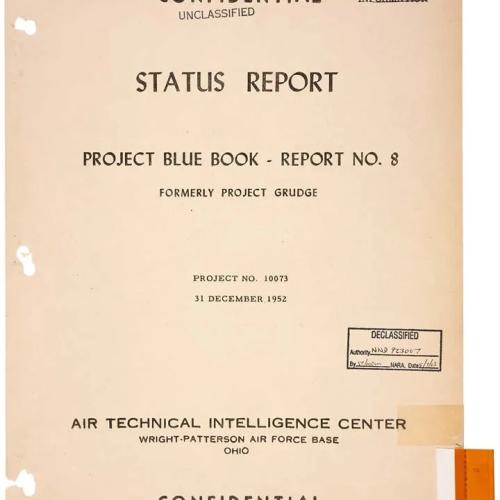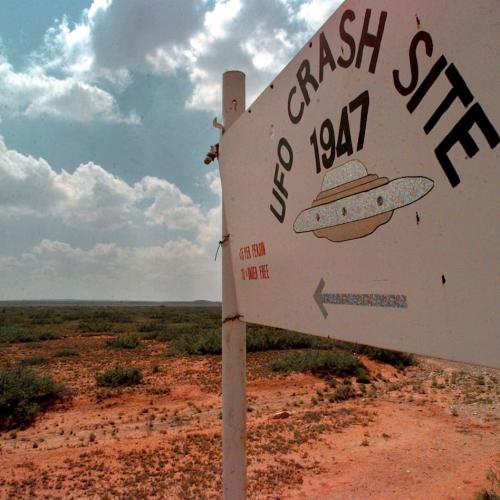Energy Inventions News Stories
Below are key excerpts of revealing news articles on energy inventions from reliable news media sources. If any link fails to function, a paywall blocks full access, or the article is no longer available, try these digital tools.
For further exploration, delve into our Energy Information Center.
David Sandalow, the Energy Department's assistant secretary for policy and international affairs, practices what he preaches when it comes to alternative-energy vehicles. Sandalow drives a Toyota Prius converted to a plug-in electric for his 5-mile commute to work every day. He recharges at night in the carport of his Washington home. Sandalow's Prius, which was converted two years ago to allow him to recharge the battery from an electric outlet, gets more than 80 miles per gallon and lets him drive 30 miles on a single charge. He can drive up to 30 miles on a single charge, only has to fill the gas tank about twice a month, and he figures he gets about 80 miles a gallon. Including the six-hour electric plug-in a day, it works out to about 75 cents per gallon of gas. His aftermarket conversion cost about $9,000, on top of the price of the Prius. Sandalow wrote the 2007 book Freedom From Oil, and he thinks that hybrids and plug-ins are the quickest way for the country to lessen its dependence on foreign oil.
Note: For key reports from reliable sources on exciting new developments in automotive design and new energy technologies, click here.
Matt Reynolds, an assistant professor in the electrical and computer engineering department at Duke University, wears other hats, too including that of co-founder of two companies. These days, his interest is in a real hat now in prototype: a hard hat with a tiny microprocessor and beeper that sound a warning when dangerous equipment is nearby on a construction site. Whats unusual, however, is that the hats beeper and microprocessor work without batteries. They use so little power that they can harvest all they need from radio waves in the air. The waves come from wireless network transmitters on backhoes and bulldozers, installed to keep track of their locations. The microprocessor monitors the strength and direction of the radio signal from the construction equipment to determine if the hats wearer is too close. Dr. Reynolds designed this low-power hat, called the SmartHat, with Jochen Teizer, an assistant professor in the school of civil and environmental engineering at Georgia Tech. They are among several people devising devices and systems that consume so little power that it can be drawn from ambient radio waves, reducing or even eliminating the need for batteries. Their work has been funded in part by the National Science Foundation.
Note: For exciting reports on new energy developments, click here.
One of the more controversial topics involving Nikola Tesla is what became of many of his technical and scientific papers after he died in 1943. Just before his death at the height of World War II, he claimed that he had perfected his so-called "death beam." So it was natural that the FBI and other U.S. Government agencies would be interested in any scientific ideas involving weaponry. The morning after the inventor's death, his nephew Sava Kosanovic hurried to his uncle's room at the Hotel New Yorker. By the time he arrived, Tesla's body had already been removed, and Kosanovic suspected that someone had already gone through his uncle's effects. Technical papers were missing as well as a black notebook he knew Tesla kept a notebook with several hundred pages, some of which were marked "Government." Just after World War II, there was a renewed interest in beam weapons. Copies of Tesla's papers on particle beam weaponry were sent to Patterson Air Force Base in Dayton, Ohio. An operation code-named "Project Nick" was heavily funded and placed under the command of Brigadier General L. C. Craigie to test the feasibility of Tesla's concept. Details of the experiments were never published, and the project was apparently discontinued. But something peculiar happened. The copies of Tesla's papers disappeared and nobody knows what happened to them.
Note: For more on this amazing man, click here and here.
A year ago, hundreds of people flocked to a 100,000-square-foot former factory building in Wauseon's industrial area where a Napoleon, Ohio, inventor promised to begin building engines that would travel more than 110 miles on a gallon of E85 gasoline. But time and the economy have not been kind to Doug Pelmear's plan to revolutionize the American automobile. The factory today is largely dark and empty, Mr. Pelmear's dreams of putting northwest Ohioans back to work are still constrained within two file drawers full of job applications, and his hopes of mass-producing his HP2g engine have fallen victim to a lack of funding. "We can't get the banks to look at us," Mr. Pelmear said yesterday. Mr. Pelmear said he hasn't sought money from more traditional capital sources such as investors, selling stock or bonded indebtedness, because such sources would likely cost him control of HP2g LLC - something he's unwilling to provide. A partnership Mr. Pelmear forged with Revenge Designs Inc., a Decatur, Ind. specialty carmaker that had planned to use his engine in its upcoming "Verde" supercar, dissolved this spring.
Note: For a treasure trove of exciting reports on new automotive and new energy technologies, click here.
Trees and algae have been turning CO2 into fuel since the dawn of time, unlocking the chemical energy within this molecule to power metabolic processes. With a little ingenuity, it is already possible to transform CO2 into anything from petrol to natural gas. Any conversion processes will take a lot of energy. The question is, can these processes be refined to ensure that less energy is used to create this fuel than is provided by it? The key challenge is to convert CO2 into carbon monoxide (CO), by removing one of its oxygen atoms. Once you have CO, the process of creating hydrocarbon fuels such as petrol is easy. It's achieved through a reaction known as the Fischer-Tropsch process most commonly used to synthesise liquid fuel from coal. But getting from CO2 to CO requires ... a lot of energy. The US Government's Sandia National Laboratories, in Albuquerque, New Mexico, have opted for ... a system that takes its energy source from concentrated solar power. As Green Futures goes to press, researchers from Bristol and Bath Universities in the UK have also announced plans for solar-powered CO2-to-fuel conversion.
Note: If plants are able to convert CO2 to energy and have been doing this for billions of years, why can't scientists figure out a way to do this for human use?
A Navy-funded thermal engine bobbing off the coast of Hawaii is accomplishing a rare feat -- it produces more energy than it consumes. Though it's not quite a perpetual motion machine, it could provide scientists or the Navy with a perpetual presence on the seas. The engine is attached to an unmanned underwater vessel, called SOLO-TREC, and uses the energy of the ocean to derive a practically limitless energy supply. SOLO-TREC is outfitted with a series of tubes full of waxy phase-change materials. As the float encounters warm temperatures near the ocean's surface, the materials expand; when it dives and the waters grow cooler, the materials contract. The expansion and contraction pressurizes oil, which drives a hydraulic motor. The motor generates electricity and recharges the batteries, which power a pump. The pump can change the float's buoyancy, allowing it to move up and down the water column. "In theory what you have now is unlimited endurance for something that has this type of engine," said Thomas Swean Jr., team leader for ocean engineering and marine systems at the Office of Naval Research, which funded the project. "Other things can break, but as far as the energy source, it will only stop working if the ocean ran out of energy, which is unlikely to happen."
Note: For lots more from major media sources on promising new energy inventions, click here.
This week, scientists gathered at the American Chemical Society's spring meeting in San Francisco to turn the spotlight on a highly unorthodox path: the effect known as cold fusion. This year's session featured nearly 50 presentations - including reports on batteries and bacteria that appear to exhibit the cold-fusion effect. Back in 1989, cold fusion was heralded as a simple, inexpensive way to get a power-generating fusion reaction on a desktop. But when the experimental results couldn't be reproduced, the researchers were driven into obscurity [and] the term "cold fusion" became synonymous with quackery. Chemists, however, have kept up their interest in the effect. Rick Nebel [has headed] up a handful of researchers following the less-traveled path to fusion at EMC2 Fusion Development Corp. EMC2 recently created a buzz in the fusion underground by reporting on its Web site that it successfully completed a series of experiments to "validate and extend" earlier results. The company is now using a $7.9 million contract from the U.S. Navy to build a bigger test machine. Nebel and his colleagues are now seeking contributions to fund the development of what they say would be a 100-megawatt fusion plant - a "Phase 3" effort projected to cost $200 million and take four years. "Successful Phase 3 marks the end of fossil fuels," the Web site proclaims.
Note: For a powerful, reliable documentary showing how promising results from cold fusion were strongly suppressed, click here. For lots of reports from reliable sources of new energy developments, click here.
Scientists at Sandia National Labs, seeking a means to create cheap and abundant hydrogen to power a hydrogen economy, realized they could use the same technology to "reverse-combust" CO2 back into fuel. Researchers still have to improve the efficiency of the system, but they recently demonstrated a working prototype of their "Sunshine to Petrol" machine that converts waste CO2 to carbon monoxide, and then syngas, consuming nothing but solar energy. The device, boasting the simple title Counter-Rotating-Ring Receiver Reactor Recuperator (we'll go with "CR5") sets off a thermo-chemical reaction by exposing an iron-rich composite to concentrated solar heat. The composite sheds an oxygen molecule when heated and gets one back as it cools, and therein lies the eureka. The cylindrical metal CR5 is divided into hot and cold chambers. Solar energy heats the hot chamber to a scorching 2,700 degrees, hot enough to force the iron oxide composite to lose oxygen atoms. The composite is then thrust into the cool chamber, which is filled with carbon dioxide. As it cools, the iron oxide snatches back its lost oxygen atoms, leaving behind carbon monoxide.
Note: For many inspiring reports on promising new energy developments, click here.
In the world of energy, the Holy Grail is a power source that's inexpensive and clean, with no emissions. Over 100 start-ups in Silicon Valley are working on it. One of them, Bloom Energy, is about to make public its invention: a little power-plant-in-a-box they want to put literally in your backyard. You'll generate your own electricity with the box and it'll be wireless. The idea is to one day replace the big power plants and transmission line grid. K.R. Sridhar ... says he knows it works because he originally invented a similar device for NASA. He really is a rocket scientist. He invented a new kind of fuel cell, which is like a very skinny battery that always runs. Sridhar feeds oxygen to it on one side, and fuel on the other. The two combine within the cell to create a chemical reaction that produces electricity. There's no need for burning or combustion, and no need for power lines from an outside source. "It's cheaper than the grid, it's cleaner than the grid." Twenty large, well-known companies have quietly bought and are testing Bloom boxes in California. The first customer was Google. Four units have been powering a Google datacenter for 18 months. They use natural gas, but half as much as would be required for a traditional power plant. John Donahoe, eBay's CEO, says its five boxes were installed nine months ago and have already saved the company more than $100,000 in electricity costs. eBay's boxes run on bio-gas made from landfill waste, so they're carbon neutral. "In five to ten years, we would like to be in every home." [Sridhar] said a unit should cost an average person less than $3,000.
Note: To watch the fascinating 60 Minutes video clip of this amazing invention, click here. For other CBS videos clips on the Bloom Box, click here. For astounding news on other new energy sources and inventions, click here and here.
Volkswagen has a new car in pre-production that, the automaker estimates, could get up to 282 mpg. That's not a misprint. Autoblog explains, "A few years back, Volkswagen introduced a concept vehicle," known as the VW 1L, "which derived its name from its stated goal of using just one liter of fuel per one-hundred kilometers traveled." The concept "actually beat its lofty goal rather handily as it managed to achieve a miserly 282 miles per gallon in testing. Much of its amazing fuel-saving capability stemmed from its 660 pounds (300 kilograms) curb weight. The concept also featured a single cylinder engine and a 1+1 seating arrangement down the center of the car." The U.K.'s Car Magazine reports, "At the time the chairman of VW's supervisory board predicted that the super-economical two-seater would go into productionin 2012. Now the VW 1L will hit the market two years ahead of schedule, in 2010." Whether the 1L would be sold in the U.S. market isn't yet clear.
Note: Any bets on whether this car will actually go into production and be promoted? Check out what happened to the Eco Spirit, which got over 100 mpg at this link.
When I meet [Edward] Moses [at the Lawrence Livermore National Laboratory], the 60-year-old scientist ... shows me a tiny pellet ... and swears it will provide an endless supply of safe, clean energy. The pellet Moses holds is a model, but the real version will contain a few milligrams of deuterium and tritium, isotopes of hydrogen that can be extracted from water. If you blast the pellet with a powerful laser, you can create a reaction like the one that takes place at the center of the sun. Harness that reaction, and you've created a star on earth, and with the heat from that star you can generate electricity without creating any pollution. Forget about nuke plants, coal, oil, or wind and solar. "This is the real solar power," says Moses. What Moses is talking about is controlled nuclear fusion. Instead of splitting the nucleus of an atom, you're trying to force a deuterium nucleus to merge, or fuse, with a tritium nucleus. When that happens, you produce helium and throw off energy. Scientists have been trying to produce energy with fusion for decades. So far, they keep failing. The joke is that fusion energy is only 40 years away, and will always be only 40 years away. Moses believes, however, that his lab, which is called the National Ignition Facility, or NIF, has cracked the problem. The big challenge fusion has faced is lack of power. NIF's laser ... can produce 60 times more energy than any other laser ever built. Right now it's still being tested. But next year Moses and his scientists will fire it up with a full load of deuterium-tritium fuel, and Moses feels confident it will achieve "ignition," meaning a controlled burn in which you get out more energy than you put in.
Note: For many reports from reliable sources of promising new energy developments, click here and here.
The federal government is behind the times when it comes to making decisions about advancing the solar industry, according to several solar-industry experts. This has led, they argue, to a misplaced emphasis on research into futuristic new technologies, rather than support for scaling up existing ones. That was the prevailing opinion at a symposium last week put together by the National Academies in Washington, DC, on the topic of scaling up the solar industry. The meeting was attended by numerous experts from the photovoltaic industry and academia. And many complained that the emphasis on finding new technologies is misplaced. "This is such a fast-moving field," said Ken Zweibel, director of the Solar Institute at George Washington University. "To some degree, we're fighting the last war. We're answering the questions from 5, 10, 15 years ago in a world where things have really changed." Industry experts at the Washington symposium argued that new technologies will take decades to come to market, judging from how long commercialization of other solar technologies has taken. Meanwhile, says Zweibel, conventional technologies "have made the kind of progress that we were hoping futuristic technologies could make." For example, researchers have sought to bring the cost of solar power to under $1 per watt, and as of the first quarter of this year one company, First Solar, has done this. These cost reductions have made solar power cheaper than the natural-gas-powered plants used to produce extra electricity to meet demand on hot summer days.
Note: Interesting that MIT has reported this story, but none of the major media picked it up. Solar energy will very likely be cheaper than oil-generated energy in under 10 years. For more on the current state of solar, click here.
Urine-powered cars, homes and personal electronic devices could be available in six months with new technology developed by scientists from Ohio University. Using a nickel-based electrode, the scientists can create large amounts of cheap hydrogen from urine that could be burned or used in fuel cells. "One cow can provide enough energy to supply hot water for 19 houses," said Gerardine Botte, a professor at Ohio University developing the technology. "Soldiers in the field could carry their own fuel." Pee power is based on hydrogen, the most common element in the universe but one that has resisted efforts to produce, store, transport and use economically. Storing pure hydrogen gas requires high pressure and low temperature. Chemically binding hydrogen to other elements, like oxygen to create water, makes it easier to store and transport, but releasing the hydrogen when it's needed usually requires financially prohibitive amounts of electricity. By attaching hydrogen to another element, nitrogen, Botte and her colleagues realized that they can store hydrogen without the exotic environmental conditions, and then release it with less electricity, 0.037 Volts instead of the 1.23 Volts needed for water. Stick a special nickel electrode into a pool of urine, apply an electrical current, and hydrogen gas is released. A fuel cell, urine-powered vehicle could theoretically travel 90 miles per gallon. A refrigerator-sized unit could produce one kilowatt of energy for about $5,000, although this price is a rough estimate, says Botte. "The waste products from say a chicken farm could be used to produce the energy needed to run the farm," said John Stickney, a chemist and professor at the University of Georgia.
Note: For many exciting reports from reliable sources on new energy technologies, click here.
As countries and cities around the world move to ban plastic bags, a Canadian teenager is tackling the problem of what to do with them. High school student Daniel Burd successfully isolated microorganisms from soil and used them to help degrade 43 percent of his polyethylene sample within a few weeks in a science project that recently won him the C$10,000 ($9,800) top prize at the Canada-Wide Science Fair. "The purpose of my project was to first of all prove that it's possible to do the degradation, and I just wanted to develop a beginning procedure that could be used," said the 17-year-old Grade 11 student, who also walked away with nearly C$35,000 in university scholarship offers. "We know that after 40 to 100,000 years, the plastic bags will be degraded naturally. Some type of microbe must be responsible for this. So the first step was to isolate this microbe and that's what I did," said Burd, who began his research in December 2006. To isolate the microorganism, he turned the plastic bags into a powder -- an important step, Burd said, because it increases the surface area and helps the microorganisms that can use the plastic to grow. Once he had the powder, he collected soil samples from a landfill, and combined the two with a home-made solution that would encourage microorganism growth. After months of experimenting, he isolated two microbial strains from the genuses sphingomonas and pseudomonas. Burd worked with the microbes to find the combination that would degrade strips of plastic bags best, and optimized the process by factoring in elements such as temperature and concentration of microbes. "In the end I was able to find that after six weeks incubation 43 percent of my plastic bag is degraded."
Note: Why wasn't this all over the news? Very few media outlets covered this highly inspiring story. For a more recent article on this fascinating topic, click here.
The man who drove his 20-year-old Mustang from Napoleon, Ohio, to Las Vegas and back last year on 39 gallons of fuel will open his first manufacturing facility Monday to allow others to get 110 miles per gallon. Doug Pelmear, owner of Horse Power Sales.net Inc. and Hp2G LLC, will hold an open house ... in Wauseon to begin manufacturing his revolutionary engine. The factory ... will be tooled to initially turn out 20 of Mr. Pelmear's custom engines per day with one shift of 25 workers. A Decatur, Ind., specialty car company, Revenge Designs Inc., has contracted with Mr. Pelmear to purchase 2,000 engines for use in a new vehicle it plans to unveil at the end of this year at the Los Angeles International Auto Show. The vehicle is to be called the Revenge Verde Super Car, which will use Mr. Pelmear's 400-horsepower engine and its 500 foot-pounds of torque to travel up to 200 mph and get 110 mpg - though admittedly not at the same time. "The engine is going to be a really great partnership with the car," explained Emily Levault, a spokesman for Revenge Design. "The idea behind this was to give people what they want while putting people back in their jobs." Ms. Levault said the Verde will be introduced as both a left and right-hand drive, so that it can be marketed around the world. Mr. Pelmear has said that he employs more precise tolerances and manufacturing techniques to decrease heat and energy loss and increase the efficiency of the internal combustion engine. He said he has more than quadrupled the industry average engine efficiency of about 8 percent.
Note: For a treasure trove of reliable reports on breakthrough developments in auto and new energy technologies, click here.
The invention described herein was made in the course of, or under, a contract with the U. S. ATOMIC ENERGY COMMISSION. It relates ... to a method and apparatus for drilling, tunneling and shaft-sinking in rock with particular advantage at hitherto inaccessible depths. The present invention uses the basic apparatus and method disclosed in U.S. Pat. No. 3,357,505 and in Los Alamos Scientific Laboratory of the University of California Report No. LA-3243 (1965) entitled "Rock Melting as a Drilling Technique." In the existing rock melting devices of the prior art, a major difficulty which limited performance was that of delivering a sufficiently large heat flux to the melting face of the drill or penetrator. The development of the heat pipe alleviates this problem in that the use of heat pipes enables the transfer of heat energy from a compact heat source to the extended melting surface of the penetrator at rates high enough to maintain the surface above the melting temperature of the rock. The extrapolation of a mechanism useful for forming large holes in the earth in accordance with the present invention uses the combination of a refractory rock-melting tool, an in situ heat source preferably a small nuclear reactor and an exceedingly efficient heat transfer mechanism such as a system of heat pipes to convey heat from the source to the walls of the drilling tool.
Note: This patent shows that government scientists at Los Alamos were using a "small nuclear reactor" to drill underground tunnels. Several of the inventors listed on the patent worked at Los Alamos National Laboratory, including: McInteer, Berthus B.; Mills, Robert L.; Potter, Robert M.; Robinson, Eugene S.; Rowley, John C.; and Smith, Morton C.. For photos and more fascinating information on this most intriguing patent, click here.
Twenty years ago it appeared, for a moment, that all our energy problems could be solved. It was the announcement of cold fusion - nuclear energy like that which powers the sun - but at room temperature on a table top. It promised to be cheap, limitless and clean. Cold fusion would end our dependence on the Middle East and stop those greenhouse gases blamed for global warming. It would change everything. But then, just as quickly as it was announced, it was discredited. So thoroughly, that cold fusion became a catch phrase for junk science. Well, a funny thing happened on the way to oblivion - for many scientists today, cold fusion is hot again. "We can yield the power of nuclear physics on a tabletop. The potential is unlimited. That is the most powerful energy source known to man," researcher Michael McKubre told 60 Minutes correspondent Scott Pelley. McKubre says he has seen that energy more than 50 times in cold fusion experiments he's doing at SRI International, a respected California lab that does extensive work for the government. McKubre is an electro-chemist who imagines, in 20 years, the creation of a clean nuclear battery. "For example, a laptop would come pre-charged with all of the energy that you would ever intend to use. You're now decoupled from your charger and the wall socket," he explained. The same would go for cars. "The potential is for an energy source that would run your car for three, four years, for example. And you'd take it in for service every four years and they'd give you a new power supply," McKubre told Pelley.
Note: To watch the full, revealing 12-minute video clip of this segment, click here.
Distance, not speed, was the goal this weekend on the track at the 2009 Shell Eco-marathon Americas(R), a challenge for students to design, build and test fuel-efficient vehicles that travel the farthest distance using the least amount of fuel. This year, more than 500 students from North and South America were on hand to stretch the boundaries of fuel efficiency. So who came out on top? The student team from Laval University, with an astonishing 2,757.1 miles per gallon, equivalent to 1,172.2 kilometres per liter, won the grand prize in the "Prototype" category. And in the "UrbanConcept" category - new to the Americas event this year - the team from Mater Dei High School took the grand prize by achieving 433.3 mpg, equivalent to 184.2 km/l. With 44 participating teams at track competition was steep. This year's challenge brought together a number of returning teams determined to beat the 2,843 mpg (1,208 km/l) record set by Mater Dei High School (Evansville, Ind.) in 2008, combined with a number of new teams adding fresh innovation and vehicle designs to the competition. "The Shell Eco-marathon is a platform for students to let their imaginations run wild," said Mark Singer, global project manager for the Shell Eco-marathon. "By encouraging these students to build vehicles with greater energy efficiency, we hope this will help inspire others; and together we can find solutions that will help meet the global energy challenge."
Note: CNBC removed this article for some reason. It was still available on the Shell website at this link for a while, but then strangely removed. Using the Internet Archive, you can still view the article at this link. Why so little media attention to this most exciting race for top gas mileage? And if high school students can build a car that gets over 2,500 mpg, what's up with Detroit? Could big business be suppressing, or at the very least ignoring these inspiring inventions?
People are looking for ways to trim budgets and cut down on energy use. There's a product heating up in Utah that does just that. It even helps a good cause. Don't underestimate the power of cooking with the sun. LaRue Howells first bought a Global Sun Oven a year ago to be prepared for an emergency, but now she uses it a few times a week, all-year round and shares her knowledge with members of her church. Howells said, "I can grab the solar oven and some food and take off if I needed to, and it's wonderful to have." She baked bread for us. The temperature outside was in the low 40s. "We baked bread when it was 17 degrees outside," she said. "The temperature outside isn't the issue, it's the sun." To control the heat of the oven, you adjust the angle of the oven to the sun. If you want to reduce the heat, you angle it away from the sun. One-third of the Sun Ovens sold in the U.S. are sold in Utah. Joe Crane, with Kitchen Kneads, said, "Just being prepared, self-sufficient brings a lot of peace of mind to people." Crane started to sell them nearly a year ago. "Temperature makes no difference," he said. "I've cooked at 5 below to 90 degrees in the summer time." All you need is sun, and cook times aren't much longer than with a conventional oven. As useful as we might find them, Sun Ovens are life sustaining in developing countries looking for solutions to deforestation and energy deficiency. Domestic sales help pay for ovens in Afghanistan, Nepal and South Africa. They cost around $300. Sun Ovens [use] no electricity and [burn] no fuels, meaning no emissions.
Note: For more on this fascinating development, https://www.sunoven.com. See also http://solarcookers.org
Chances are you've heard of hybrids and biofuels, but what about oil-producing yeast and turbinelike buoys that transform ocean waves into electricity? Those are just a couple of the alternative-energy sources that may power the future according to Fred Krupp, president of the Environmental Defense Fund and coauthor, with Miriam Horn, of the new book Earth: The Sequel (Norton). "Everyone knows the current story of melting glaciers, rising sea levels, worsening hurricanes, dying coral reefs," said Krupp. "'The Sequel' is the story of what happens next." Newsweek's Katie Paul talked with Krupp about ... the next industrial revolution. Newsweek: You seem to be a big fan of solar energy. Why do you think there's so much promise to it? Fred Krupp: We have two chapters on solar energy at the beginning of the book because we think there's tremendous potential there. Every hour, the sun provides the earth with as much energy as all of human civilization uses in an entire year. So, if you could capture just 10 percent of it on a ... 100-mile square piece of land, you could power the entire United States. With solar thermal energy, capturing heat instead of immediately going to electricity, one advantage is that you can store hot water much more cheaply than you can store electricity. There is tremendous potential there, even before advanced batteries are developed, and reason to think solar energy can compete. [Newsweek:] And besides solar? How are they addressing some of the negatives associated with biofuels? [Krupp:] I think we've come to understand that the current generation of biofuels has problems and that we need a whole new generation.
Note: For more exciting reports from major media sources on new energy technologies, click here.
Important Note: Explore our full index to revealing excerpts of key major media news stories on several dozen engaging topics. And don't miss amazing excerpts from 20 of the most revealing news articles ever published.













